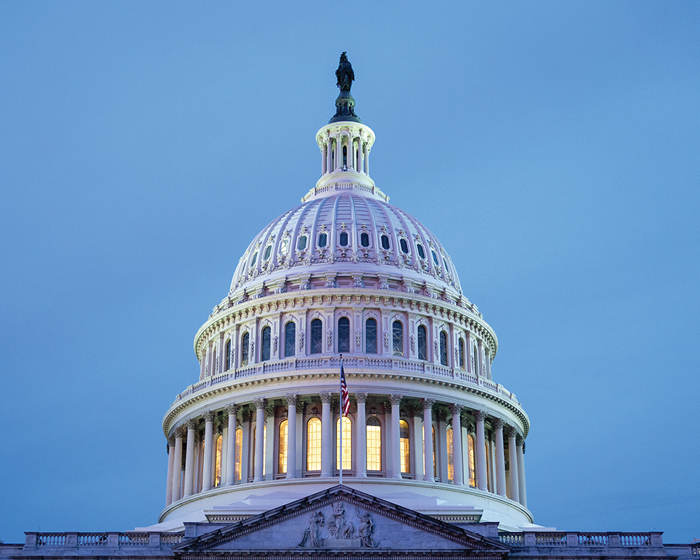Key Takeaways
- Republicans took a major step forward in their effort to extend the TCJA.
- A budget resolution passed by the House and Senate allows for trillions of dollars in tax cuts.
- House deficit hawks wanted mandates for spending reductions, but settled for reassurances from leaders to include cuts in the final bill.
- More Republicans are openly pushing to preserve some of the Inflation Reduction Act's green energy credits.
- Lawmakers look for ways to tweak Trump's proposal to exempt Social Security payments from taxation, without violating Senate rules or hurting the program.
The weather in D.C. has been cold and dreary of late—struggling to leave winter behind and begin with spring.
Congressional Republicans, however, finally broke through their freeze on Thursday, and moved forward in the process to pass a major tax bill sometime this year. The House of Representatives approved a budget resolution previously passed by the Senate, in a 216-214 vote. (See more coverage in our daily roundup.)
The resolution is the first step in the reconciliation process, which will eventually allow Congressional leaders to bypass a Senate filibuster and put a major tax and spending bill up for a simple majority vote in both chambers. Republicans are expected to use this procedure to try to extend provisions in the 2017 Tax Cuts and Jobs Act set to expire at the end of the year, and to consider additional tax measures like full expensing for research and development expenditures and President Trump’s proposal to exempt tips from taxation. Now that Congress has passed a budget resolution, the Congressional committees—especially the tax-writing committees—can get to work drawing up legislative language.
Given initial opposition from Republican hardliners, Thursday’s vote was a surprising victory for House Speaker Mike Johnson. (With some help from the White House.) The deficit hawks preferred the version passed by the House in February, which included a mandate for steep spending cuts. The resolution now passed by both chambers doesn’t require significant cuts, but it doesn’t prevent them, either–and Johnson vowed to include at least $1.5 trillion in cuts in the final bill, to appease those in the party balking at the potential cost.
House members will be sure to hold Johnson to that promise when a bill comes to the floor. But because it’s no longer in writing, or divided between committees, lawmakers will have more flexibility in deciding what to cut. The resolution is also looser on the tax cut side, using a “current policy baseline” that prices in the cost of an extension and will make it easier for Congress to make it permanent. Republicans allowed for $1.5 trillion in revenue reductions on top of that, which will let them consider additional options that may be necessary to corral members, including a more generous cap on deductions for state and local taxes.
While the resolution is more flexible, it also adds a new degree of urgency. Republicans also opted to include a potential debt limit hike, which is probably the easiest way for Congress to avoid defaulting on U.S. debt this year. According to the Congressional Budget Office, an increase in the debt limit will likely be necessary in August or September, but could come as soon as late May if the economic conditions change. Republicans will have time to do the complicated work of putting all of these proposals in writing, but not that much time.
One factor that should move it along is pressure from President Trump himself, who’s been involved in the process much more closely than in the past. Individual members on the fence have gotten an earful from the president in last-minute calls, according to some reports. In the current environment that’s helped Congress overcome a few difficult hurdles–but the dynamics could always change.
Republicans for Green Energy
More Reconciliation Analysis
House Approves Trump Budget Blueprint After Winning Over GOP Holdouts – Richard Rubin and Olivia Beavers, The Wall Street Journal ($):
Republicans will now attempt to write a bill that encompasses much of Trump’s legislative agenda, then try to steer it through the House and Senate with no more than three votes to spare in each chamber.
How House Budget Hawks Went From ‘No’ to ‘Yes’ in Under 24 Hours – Cady Stanton, Tax Notes ($):
House Freedom Caucus member Chip Roy, R-Texas, told reporters that firm commitments on spending cuts for the final reconciliation bill from the White House and Republican leadership in the House and Senate two days before the vote persuaded him and other hard-liners to vote in favor of the budget resolution.
Thune on $1.5T in spending cuts: We’ll see! – Andrew Desiderio, Laura Weiss, Jake Sherman and John Bresnahan, Punchbowl News
It’s a delicate balancing act for Thune. He was reflecting the will of his own conference, which includes a strong contingent of senators drawing the line on Medicaid cuts. Leading up to the House’s vote Thursday morning, Thune even flashed some rare public frustration with House Republicans.
Republicans Navigate Hurdles to Trump Social Security Tax Pledge – Jack Fitzpatrick, Bloomberg Tax ($)
Make a habit of sustained success.



